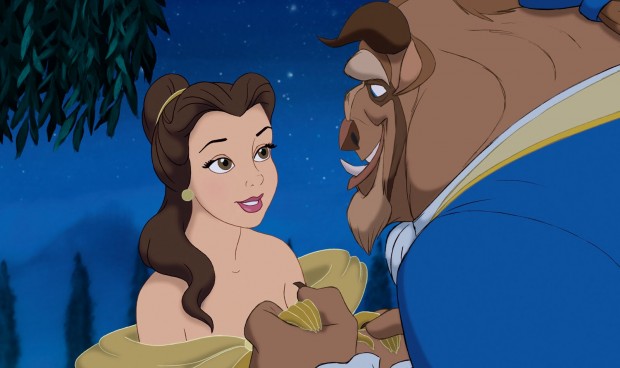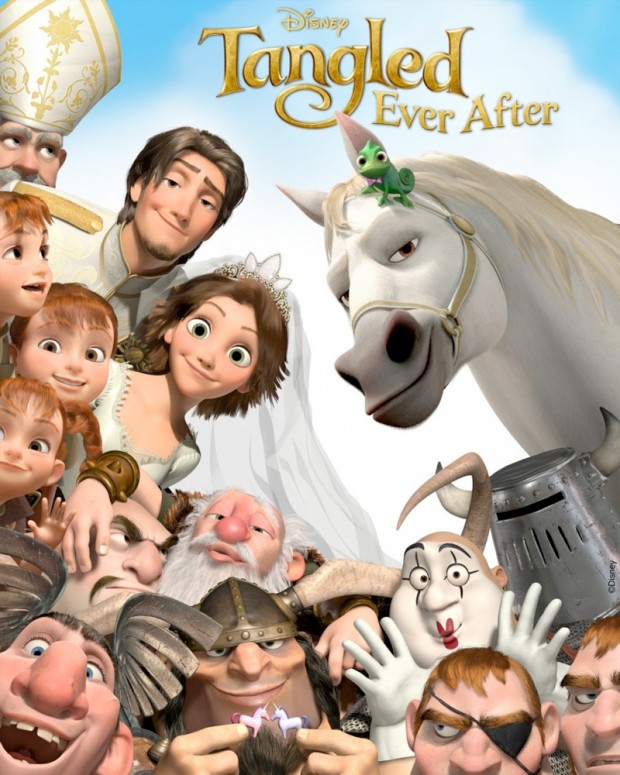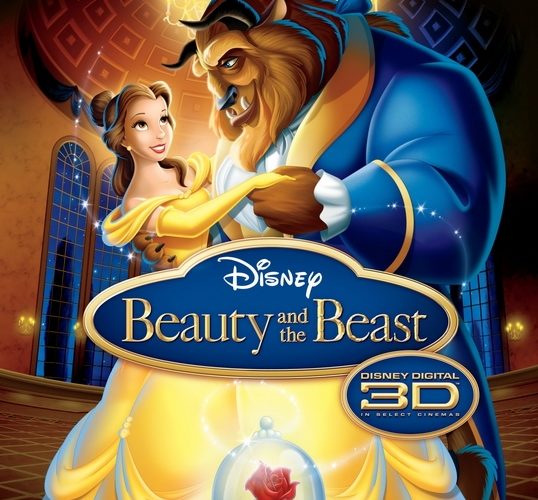
Once upon a time, before Disney’s Beauty and the Beast was declared a box office sensation, before it was dubbed the first-ever animated film to be nominated for the Academy Awards’ Best Picture, before it enchanted children worldwide with its colorful characters and exuberant musical numbers, this “tale as old as time” played before one of the world’s most discerning audiences: New York intellectuals. At the 1991 New York Film Festival, a “work in progress” version of the film that contained large swaths of colorless pencil sketched animatics was screened, and even in this raw form, the audiences raved with the rare display of a standing ovation. Beauty and the Beast is Disney at its best, and everyone knows it. So this review will not be an evaluation of this landmark animated feature as much as it will focus on what everyone really wants to know: is Disney’s retrofitted 3D worth the bloated ticket cost?
Many have declared Disney’s plan to re-release classics from the Disney vault with after-the-fact 3D as a blatant cash grab. But Disney knew full well such a strategy would face scorn, so they really strove to make something spectacular here. When the first shot of the film graced the screen, adults in the audience (myself included) literally ooed and awed over the depth of field created within the stained glass windows that serve as a elegant storybook to Beast’s backstory. A similar sense of wonder swept over me during the film’s iconic and dynamic ballroom scene, where the grandeur of the room around the besotted Belle and Beast blooms with new dimension as they glide about in an elegant dance. By and large it’s the Beast’s castle that benefits the most from 3D, with the grandeur more impressive and decay more looming than ever. Unfortunately, for much of the rest of the film, this 3D device falls flat.
Of course, films made for 3D are conceived differently. Shot choices must be made that won’t literally dizzy your audiences and quick pans are avoiding to prevent things looking out of focus. Since here the 3D is being foisted on pre-existing cinematography, it’s often flat (in various closeups) and sometimes jarring as your eyes struggle to pick a focal point, an issue I noticed during several song numbers including “Belle (Bonjour).” Additionally, at the screening I attended, I noted that some children in the audience quickly grew bored of the 3D glasses, and cast them aside—essentially choosing to watch the remainder of the film out of focus. During some of the more problematic 3D sequences, I followed their lead by closing one eye as so much switching focus was giving me a headache. The problem in short is that Beauty and the Beast was originally crafted to bring the American animated feature to a new artistic level. And it did, which makes Beauty in the Beast something I relished seeing in theaters again – even with the troublesome 3D. But while some 3D sequences were dazzling, I couldn’t imagine paying $18 (the 3D ticket price in New York) for the experience.

Another odd choice of Disney’s Beauty and the Beast re-release is that the film is preceded by a short: Tangled Ever After, which is the whimsical tale of the mayhem that occurred on Rapunzel and Eugene’s wedding day. It’s an entirely winsome cartoon, featuring cameos from many of Tangled’s most beloved characters as well as high-flying action, inventive slapstick and equine crossdressing. It’s gorgeously realized and wonderfully funny. But it’s a bit incongruent to move from a CGI short that was clearly conceived and created for 3D to a hand drawn animation that’s been retrofitted for the gimmick. Simply put, the excellence of Tangled Ever After’s use of 3D makes Beauty and the Beast’s seem all the more awkward.
Beauty and the Beast 3D opens in theaters nationwide January 13th.


